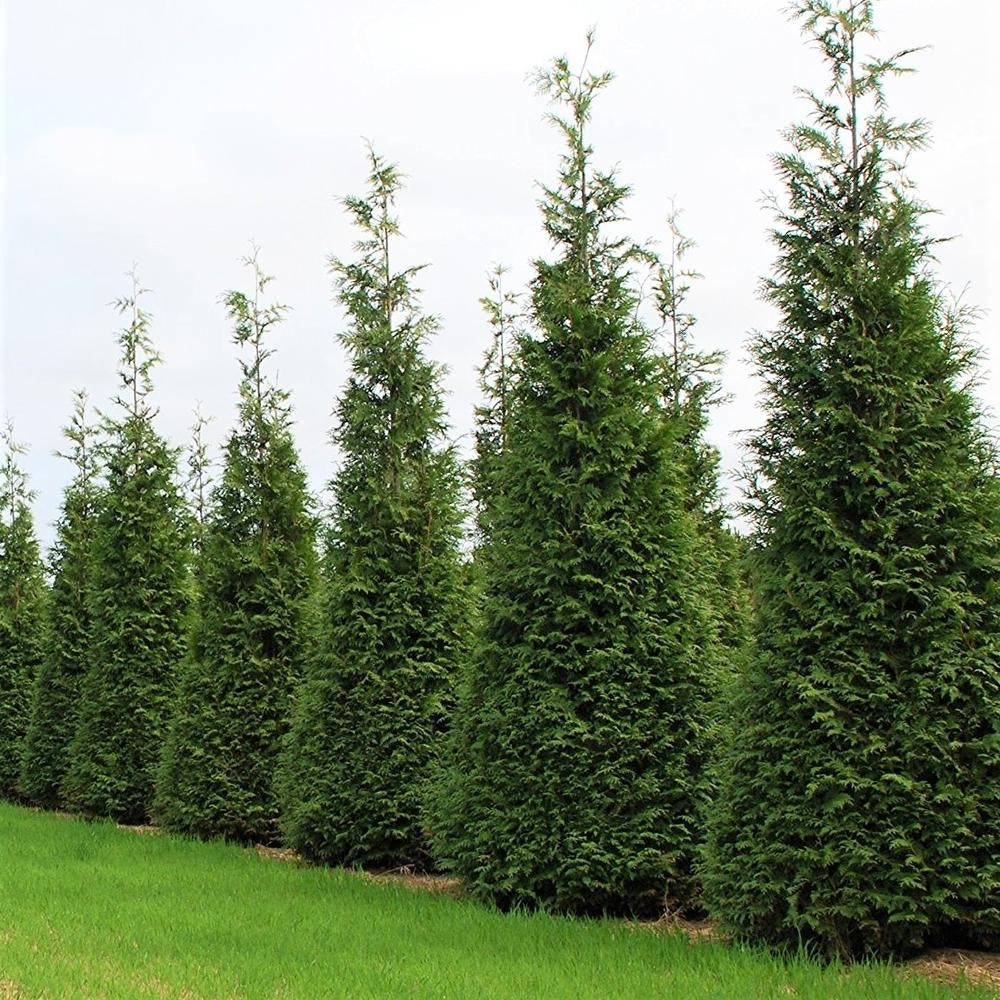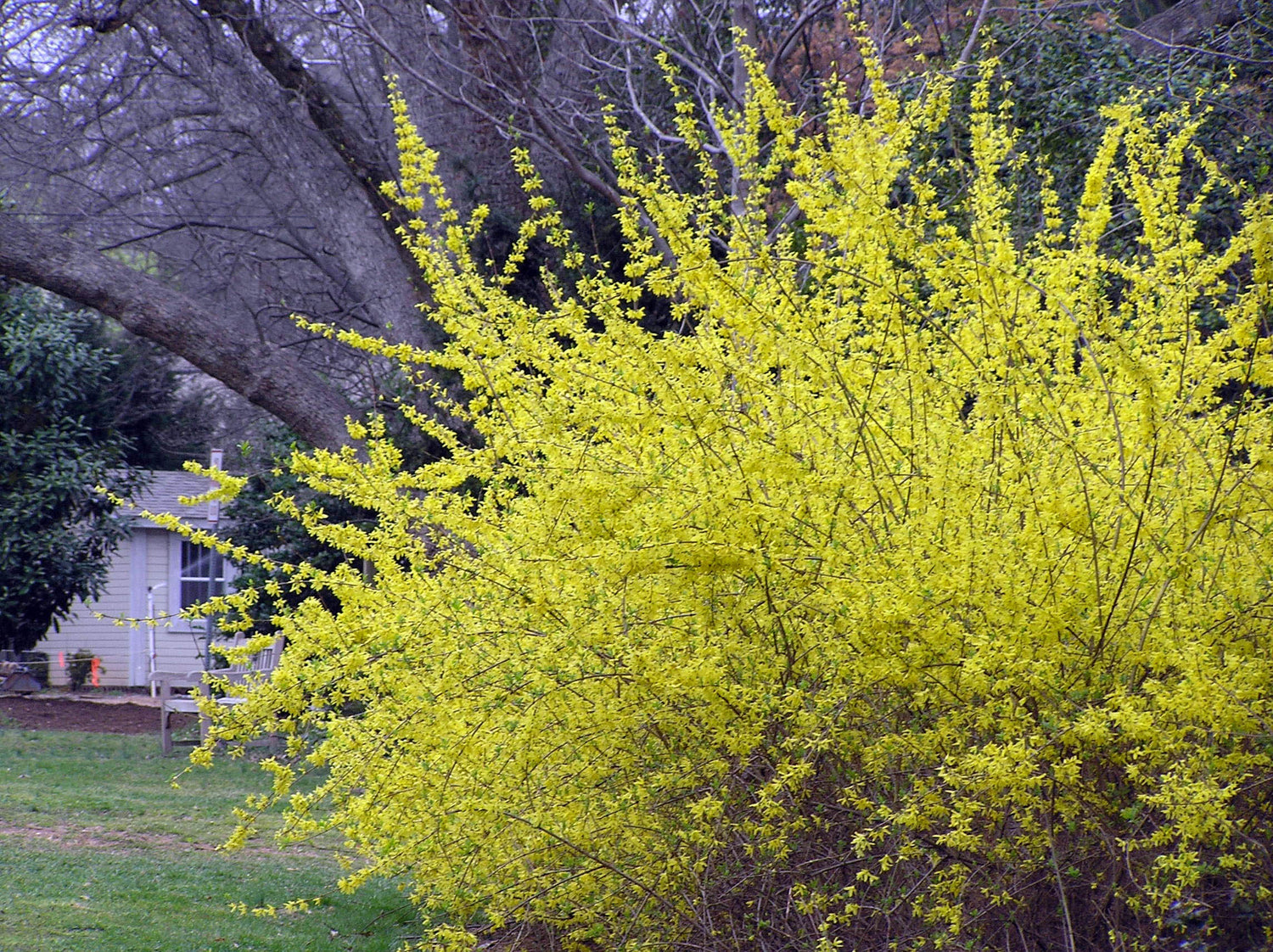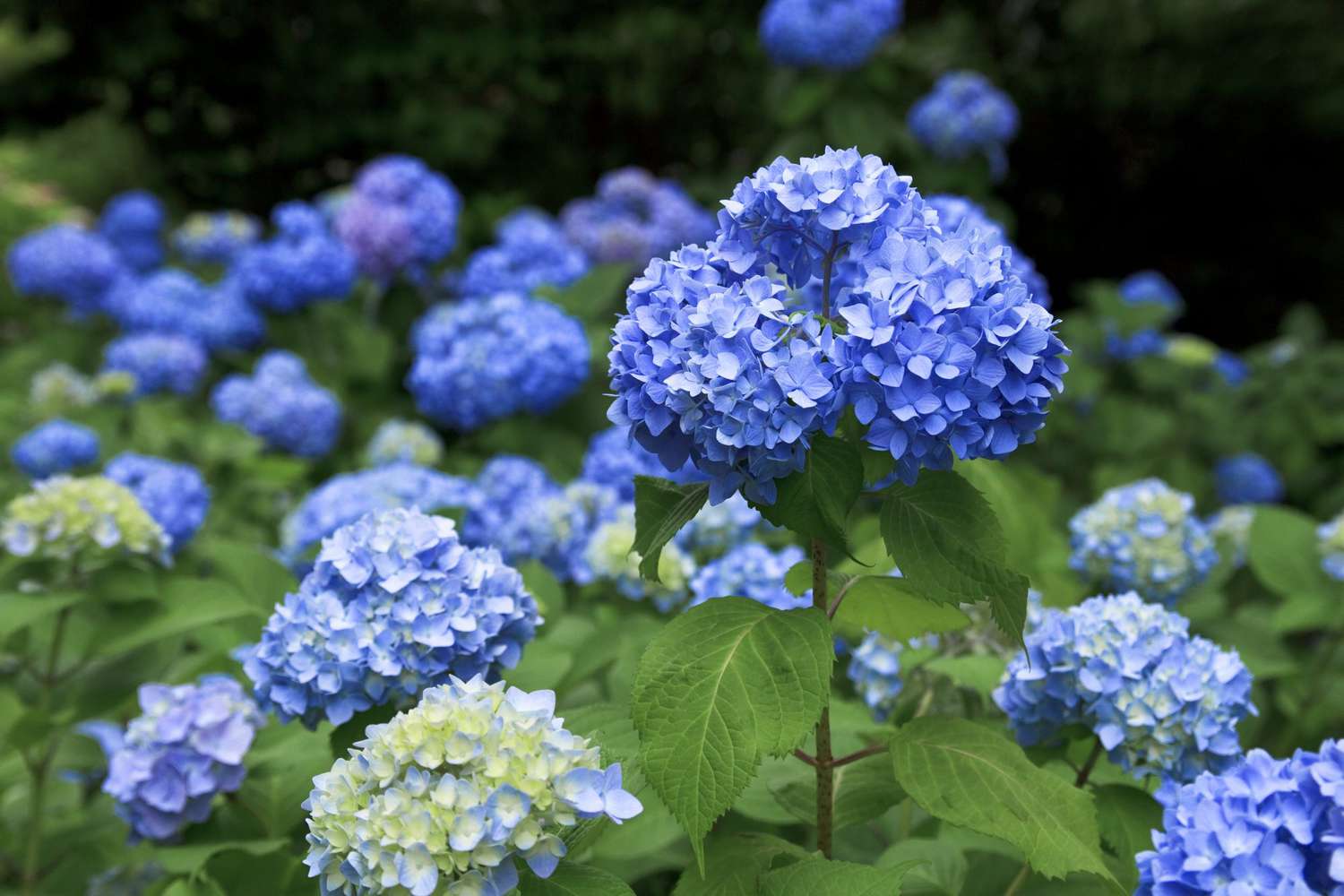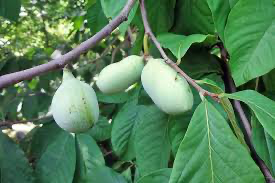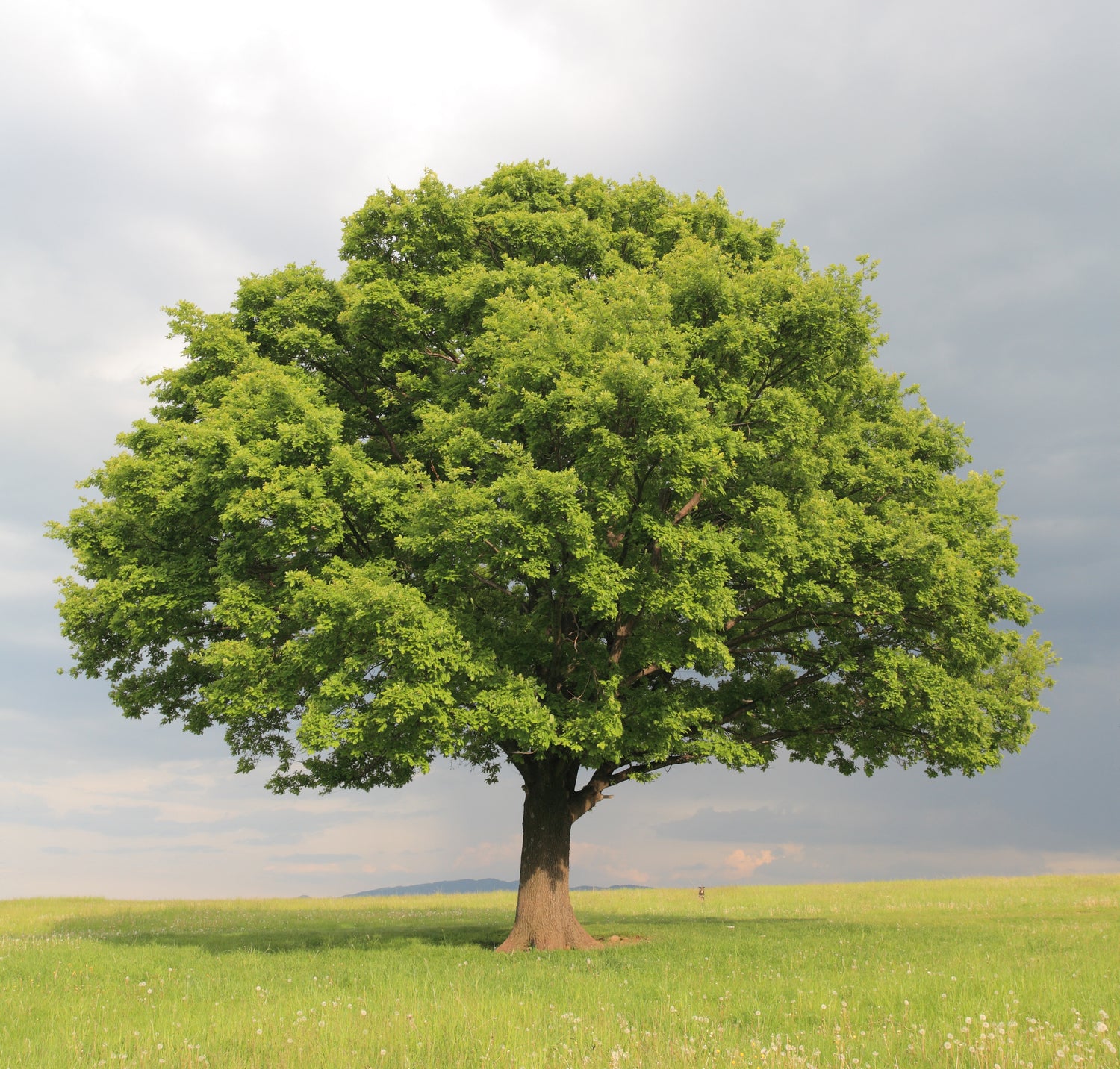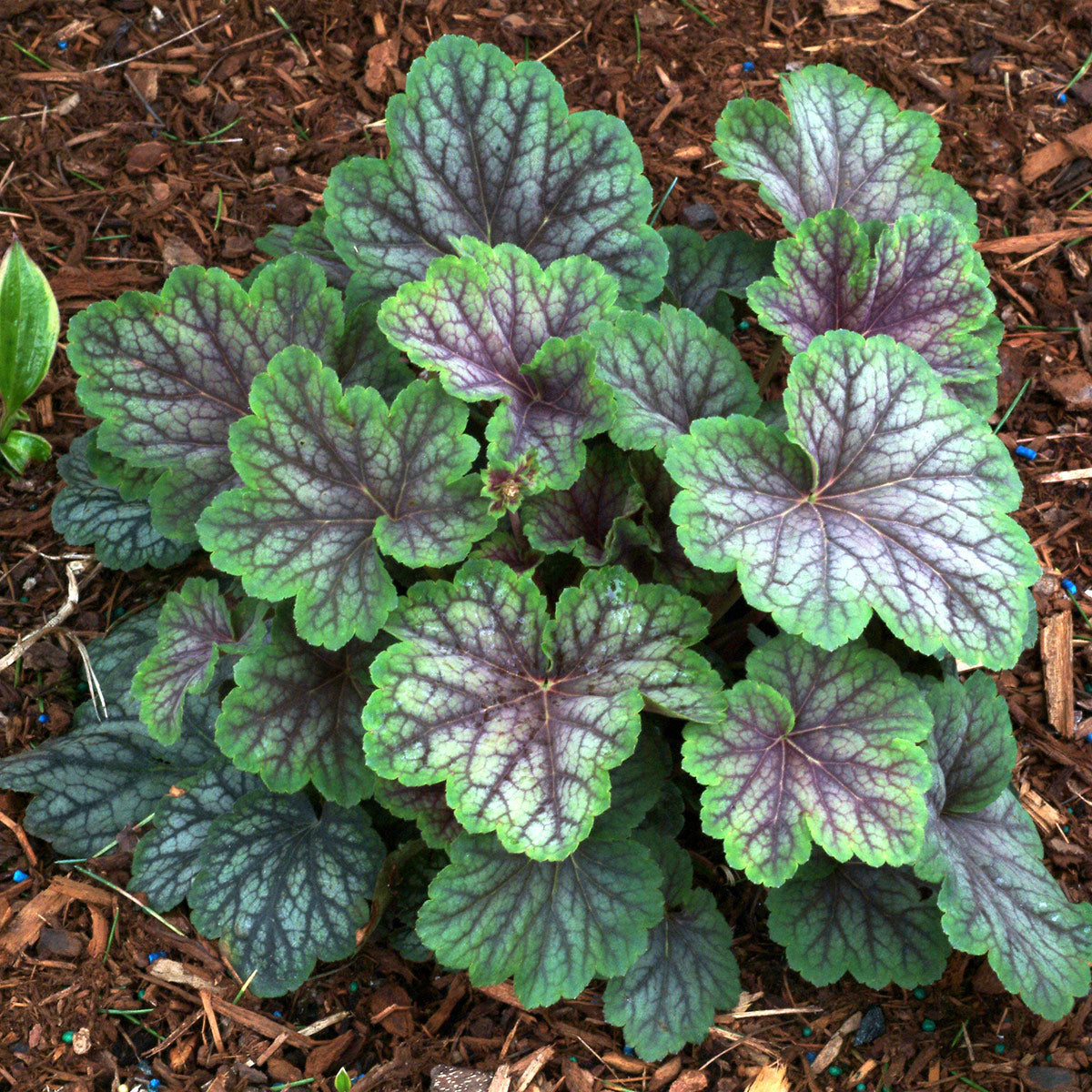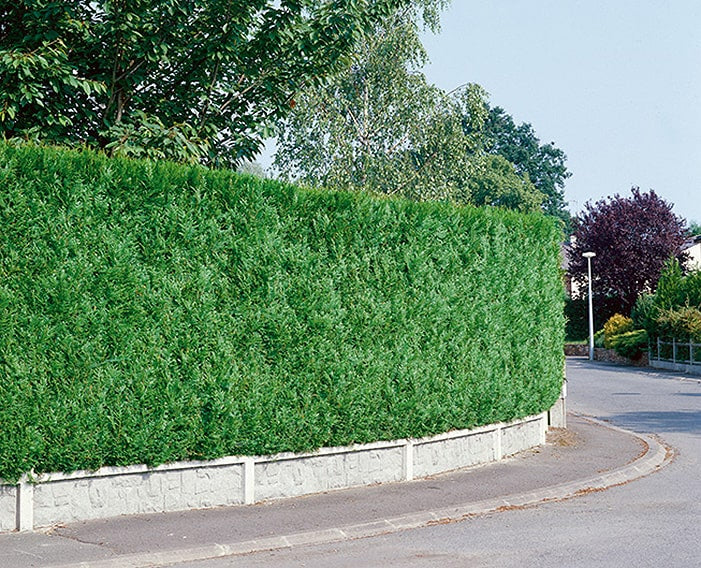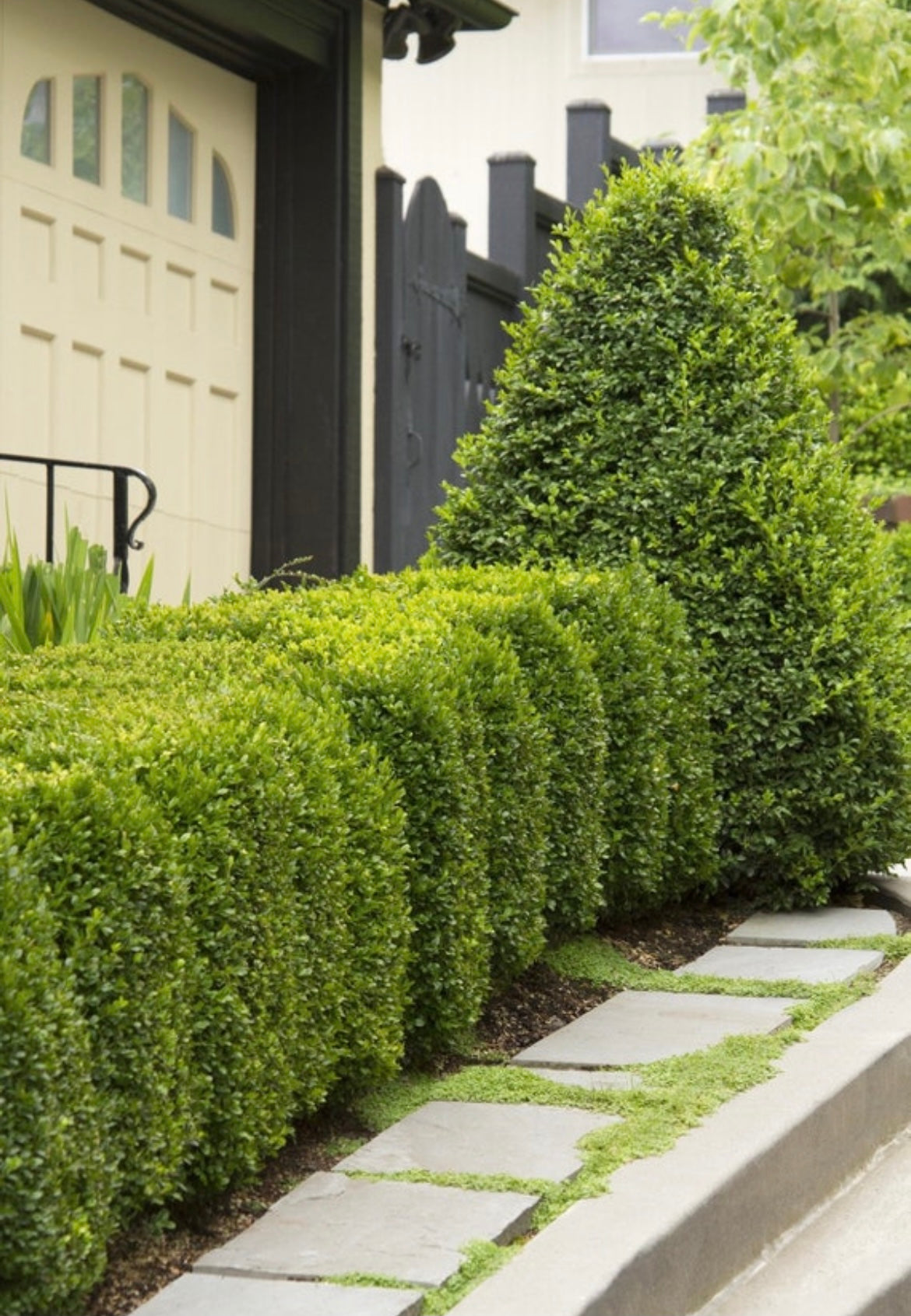Why Use Leaf Mulch?
Mulching is a simple and sustainable way to enrich your garden, and leaves are one of the best materials to use for this purpose. If you've ever wondered, "Are leaves good for mulching?" the answer is a resounding yes. Fallen leaves, when used as mulch, are an incredible natural resource that provides numerous benefits for your garden. Leaf mulch not only acts as a barrier against weeds but also enhances soil quality, moisture retention, and plant growth.
One of the most remarkable aspects of using leaves as mulch is how they transform over time, breaking down into a nutrient-rich layer that improves soil structure and fertility. This process mirrors the natural decomposition cycle seen in forest ecosystems, where fallen leaves replenish the earth and support diverse plant life.

Key Benefits of Leaf Mulch
-
Moisture Retention
A layer of leaf mulch helps the soil retain moisture by reducing evaporation from the surface. This is particularly beneficial during dry spells or hot summers, as it ensures that your plants have a consistent supply of water. By keeping the soil moist, leaf mulch reduces the need for frequent watering, making it a cost-effective and environmentally friendly gardening practice.
-
Weed Suppression
Leaf mulch acts as a natural barrier against weeds, preventing them from receiving the sunlight they need to grow. By suppressing weed growth, leaf mulch reduces competition for nutrients and water, allowing your plants to thrive. This is an excellent way to keep your garden looking neat and tidy without resorting to chemical weed killers.
-
Temperature Regulation
Just like a cozy blanket, leaf mulch helps regulate soil temperature by insulating plant roots against extreme weather conditions. During hot summer days, mulch keeps the soil cool, while in winter, it offers protection against frost. This temperature moderation creates a stable environment for your plants, reducing stress and promoting healthy growth.
-
Soil Enrichment
As leaves break down, they release essential nutrients like nitrogen, phosphorus, and potassium into the soil. This natural fertilization process enriches the soil, improving its texture and nutrient content. Over time, leaf mulch enhances soil fertility, supporting robust plant growth and increasing the resilience of your garden.
Using leaves as mulch is a win-win for gardeners seeking sustainable and effective solutions. It not only improves soil health but also contributes to a self-sustaining garden ecosystem that mimics nature's cycles.
For those looking to enhance their garden with fast-growing plants and trees, consider exploring this fast-growing trees and plants collection. These plants can complement the benefits of leaf mulch and further enrich your garden's biodiversity.
Mimicking the Forest Floor: Nature's Blueprint for Sustainability
Nature has long been a source of inspiration for sustainable practices, and the forest floor exemplifies how ecosystems maintain balance and health. By mimicking the natural processes that occur in forests, gardeners can create a thriving, sustainable garden environment that supports biodiversity and plant health. Using leaves as mulch is a key element of this approach, as it replicates the natural cycle of nutrient replenishment and soil enhancement.
The Natural Cycle of Forests
Forests are self-sustaining ecosystems that rely on a continuous cycle of growth, decay, and renewal. When leaves fall from trees, they accumulate on the forest floor, forming a layer of organic matter that decomposes over time. This decomposition process releases nutrients back into the soil, supporting the growth of trees, plants, and other organisms. The fallen leaves also help retain moisture, suppress weeds, and regulate soil temperature, creating an ideal environment for diverse plant life.
This natural cycle is incredibly efficient, as it ensures that nutrients are recycled and that the soil remains fertile and healthy. By observing and emulating these natural processes, gardeners can achieve similar benefits in their gardens, reducing the need for synthetic fertilizers and other inputs.
Recreating Forest Conditions in Your Garden
Recreating the conditions of the forest floor in your garden is a straightforward process that involves using leaf mulch to build a rich, organic layer on top of your soil. Here's how you can do it:
Gathering Leaves: Start by collecting fallen leaves from your garden or nearby areas. Autumn is the perfect time for this, as many trees shed their leaves during this season. You can store these leaves in compost bins or dedicated piles until you're ready to use them.
Shredding Leaves: Before applying leaves as mulch, it's beneficial to shred or chop them into smaller pieces. This speeds up the decomposition process and ensures that the mulch forms a dense, even layer over the soil. A garden shredder or lawn mower can make this task easier and more efficient.
Applying Leaf Mulch: Spread a layer of shredded leaves around your garden plants, aiming for a thickness of 2 to 4 inches. This depth is sufficient to suppress weeds and retain moisture while allowing air and water to penetrate the soil. Be careful not to pile the mulch against plant stems, as this can create a moist environment conducive to rotting.
Maintaining the Mulch Layer: Over time, the leaf mulch will decompose, enriching the soil with nutrients. It's important to replenish the mulch layer periodically, especially in areas where it has broken down significantly. This ongoing maintenance ensures that your garden continues to benefit from the mulch's protective and nourishing properties.
By using leaf mulch, you can create a garden ecosystem that closely resembles the natural processes of a forest. This approach not only enhances soil health and plant growth but also promotes biodiversity and resilience. For gardeners interested in incorporating beautiful trees into their landscapes, consider adding small trees under 25 feet to your garden design. These trees can provide additional shade and beauty, complementing the benefits of leaf mulch.
Leaf mulch is an excellent way to mimic nature's efficiency and beauty in your garden, offering a sustainable and cost-effective solution for healthier plants and soil.
Collecting and Preparing Leaves for Mulching
One of the most appealing aspects of using leaves as mulch is their availability and ease of collection. This natural mulch is right at your fingertips, especially during the fall when trees shed their leaves. By learning how to effectively gather and prepare leaves, you can take full advantage of this abundant resource to create a healthier, more sustainable garden.
Easy Leaf Collection Tips
Collecting leaves for mulch is a simple task that can be integrated into your regular garden maintenance routine. Here are some practical tips to make leaf collection easy and efficient:
-
Timing: Autumn is the ideal season for gathering leaves, as most trees will drop their foliage at this time. However, you can also collect leaves throughout the year, especially if you have deciduous trees that shed leaves at different times.
-
Equipment: Use a rake or leaf blower to gather leaves into piles. For larger areas, a leaf vacuum or mower with a bag attachment can speed up the process.
-
Storage Solutions: Once collected, store your leaves in compost bins, dedicated leaf piles, or biodegradable bags. This ensures you have a steady supply of leaves ready for mulching when you need them. Compost bins are particularly useful as they can facilitate the decomposition process, turning your leaves into rich, organic material over time.
Preparing Leaves for Use as Mulch
Before using leaves as mulch, it's essential to prepare them properly to maximize their effectiveness. Here’s a step-by-step guide to getting your leaves mulch-ready:
-
Shredding Leaves: Shredding or chopping leaves into smaller pieces accelerates their decomposition and prevents them from matting together, which can impede airflow and water penetration. Use a leaf shredder, lawn mower, or simply cut them by hand to achieve the desired size.
-
Layering Techniques: Once shredded, spread a layer of leaves around your plants, aiming for a thickness of 2 to 4 inches. This depth is ideal for weed suppression and moisture retention while allowing beneficial organisms to thrive in the soil.
-
Avoiding Plant Stems: When applying leaf mulch, be careful not to pile it directly against plant stems or tree trunks. This can create a damp environment that promotes rot and disease. Instead, leave a small gap around each plant base to ensure proper airflow.
-
Replenishing Mulch: Over time, the leaf mulch will break down and decompose, enriching the soil with nutrients. Keep an eye on mulch levels and replenish them as needed to maintain their protective and nourishing effects. This ongoing maintenance is essential for keeping your garden healthy and thriving.
Using leaves as mulch not only benefits your garden but also reduces waste and promotes a sustainable gardening practice. By recycling this natural resource, you can minimize the need for chemical fertilizers and synthetic mulches, creating a more eco-friendly and cost-effective approach to gardening.
If you're interested in further enhancing your garden's aesthetics and functionality, check out this ultimate guide to mulching. It provides insights into different mulching techniques and how they can transform your garden into a lush, vibrant space. Additionally, incorporating shrubs and bushes into your landscape can add structure and beauty while complementing the benefits of leaf mulch.
The Benefits of Self-Sustainable Gardens
Creating a self-sustainable garden is an achievable goal that can offer numerous benefits, both for the environment and your wallet. By utilizing natural resources like leaf mulch, you can cultivate a garden that thrives on its own, requiring less intervention and artificial input. Here’s a closer look at how self-sustainable gardening can transform your outdoor space and why it's worth considering for long-term success.
Financial and Environmental Benefits
One of the primary advantages of a self-sustainable garden is the financial savings it offers. By recycling your leaves into mulch, you can significantly reduce your dependence on costly synthetic fertilizers and commercial mulching products. This shift not only saves money but also supports environmentally friendly practices that reduce the carbon footprint associated with manufacturing and transporting chemical products.
Using leaf mulch also contributes to the conservation of natural resources. By relying on a renewable resource that naturally occurs in your garden, you can minimize waste and create a more eco-friendly gardening approach. Additionally, leaf mulch helps prevent soil erosion and maintains soil fertility, which are critical for sustaining plant health and productivity over time.
Water Conservation
Water conservation is another significant benefit of using leaf mulch in a self-sustainable garden. Leaf mulch helps retain soil moisture by acting as a barrier against evaporation. This is particularly beneficial in arid regions or during periods of drought, as it reduces the need for frequent watering.
By maintaining consistent soil moisture levels, leaf mulch ensures that your plants receive the hydration they need to grow healthy and strong. This not only leads to more robust plants but also contributes to water-saving efforts, making your garden more environmentally responsible.
Reducing Chemical Dependency
A self-sustainable garden relies less on chemical fertilizers and pesticides, which can harm the environment and beneficial organisms in the soil. By using leaf mulch, you can create a natural habitat that encourages the presence of helpful insects, microorganisms, and fungi that work together to support plant health.
Leaf mulch acts as a natural fertilizer, releasing essential nutrients like nitrogen, phosphorus, and potassium as it decomposes. This nutrient release supports plant growth and soil health, reducing the need for synthetic fertilizers that can disrupt the soil's natural balance.
Enhancing Garden Aesthetics
Leaf mulch adds a natural, rustic look to garden beds, enhancing the visual appeal of your outdoor space. The rich, earthy tones of decomposing leaves provide a pleasing contrast against vibrant plant colors, adding depth and texture to your garden design.
In addition to aesthetics, leaf mulch helps define garden pathways and planting areas, contributing to an organized and cohesive layout. This not only makes your garden more enjoyable to look at but also easier to navigate and maintain.
Long-Term Soil Health and Productivity
Over time, using leaf mulch contributes to improved soil health by enhancing its structure and nutrient content. The organic matter from decomposing leaves improves soil aeration and water retention, creating an ideal environment for plant roots to thrive.
Healthy soil is the foundation of a productive garden, and leaf mulch plays a crucial role in building and maintaining this foundation. By fostering long-term soil health, you can enjoy a more resilient garden capable of withstanding pests, diseases, and environmental stresses.
For gardeners interested in expanding their sustainable practices, consider incorporating privacy screening plants into your landscape. These plants can complement the benefits of leaf mulch by providing additional protection and enhancing garden aesthetics.
If you're looking to further diversify your garden, explore the large trees collection for options that can offer shade, beauty, and environmental benefits. These trees work in harmony with leaf mulch to create a thriving ecosystem that supports a self-sustainable garden.
Tips for a Successful Leaf Mulching Practice
Successfully integrating leaf mulch into your garden requires some practical strategies to ensure maximum benefits. By adopting a few key practices, you can create a more effective mulching system that supports your garden's health and sustainability. Here are some essential tips to guide you in developing a successful leaf mulching practice:
Seasonal Considerations
Adapting your mulching techniques to the seasons is essential for maintaining an effective mulching practice. Here’s how to adjust your approach throughout the year:
-
Autumn: Fall is the prime time for collecting leaves, as most deciduous trees shed their foliage during this season. Gather and shred leaves to prepare for winter mulching. The additional layer helps insulate plant roots against the cold and retains moisture.
-
Winter: In colder climates, apply a thicker layer of leaf mulch to protect plants from frost damage. Monitor mulch levels and replenish as needed, especially after heavy snowfall or rainfall, which can compact the mulch.
-
Spring: As temperatures warm up, gradually remove some of the winter mulch to prevent overheating and ensure that new growth receives adequate sunlight. This is also the time to refresh the mulch layer with newly collected leaves from spring clean-up.
-
Summer: Maintain a consistent layer of mulch to conserve soil moisture during hot, dry spells. This is crucial for reducing the need for frequent watering and protecting plants from heat stress.
Integrating Mulching with Other Organic Practices
Leaf mulching can be effectively combined with other organic gardening practices to create a more holistic and sustainable garden ecosystem. Consider these complementary strategies:
-
Companion Planting: Pairing certain plants together can enhance growth and deter pests naturally. Leaf mulch supports this practice by providing a nutrient-rich environment that benefits companion plants. For example, planting marigolds with tomatoes can repel nematodes, and leaf mulch helps maintain healthy soil for both plants.
-
Composting: Use excess leaves for composting alongside other organic materials like kitchen scraps and grass clippings. This creates a nutrient-dense compost that can be added to garden beds, enhancing soil fertility and structure. Leaf mulch can act as a starter for your compost pile, accelerating the decomposition process.
-
Natural Pest Control: Encourage beneficial insects like ladybugs and earthworms by providing a habitat that supports their needs. Leaf mulch creates a favorable environment for these helpful organisms, reducing the need for chemical pesticides. Learn more about the benefits of natural mulching and its role in attracting beneficial wildlife.
Monitoring and Adjusting Mulch
Regularly monitoring and adjusting your mulch layer is crucial for maintaining its effectiveness. Here’s what to keep in mind:
-
Decomposition Rate: Pay attention to how quickly the mulch decomposes, as this can vary based on climate, soil conditions, and leaf type. Replenish the mulch layer as needed to maintain its protective and nourishing properties.
-
Mulch Thickness: Adjust the thickness of your mulch layer based on seasonal needs and specific plant requirements. For instance, shallow-rooted plants may require a thinner layer to prevent smothering, while deep-rooted trees can handle a thicker covering.
-
Moisture Levels: Check soil moisture regularly to ensure that the mulch is not retaining too much water, which can lead to root rot. Similarly, ensure that the mulch layer isn’t too dry, as this can hinder its ability to retain moisture and suppress weeds.
For those looking to explore various plant options that can benefit from effective mulching, consider adding large trees and shrubs and bushes to your garden. These plants not only enhance your garden’s aesthetics but also thrive in the nutrient-rich environment created by leaf mulch.
By following these tips and integrating leaf mulch with other sustainable practices, you can develop a successful mulching strategy that enhances your garden's health and productivity. This approach not only supports a thriving garden ecosystem but also aligns with eco-friendly gardening principles that contribute to a more sustainable future.
Your Own Holistic Garden Ecosystem
A garden is more than just a collection of plants; it's a vibrant ecosystem where every element plays a crucial role. By embracing a holistic approach to gardening, you can create a thriving environment that supports diverse plant life, wildlife, and natural processes. Leaf mulching is a foundational practice in building this ecosystem, contributing to a balanced and self-sustaining garden.
The Role of Leaf Mulch in a Balanced Garden
Leaf mulch is a powerful tool for promoting balance and health within your garden. By mimicking the natural processes of a forest floor, leaf mulch helps maintain a thriving ecosystem where plants, insects, and microorganisms coexist in harmony. Here's how leaf mulch contributes to a balanced garden:
-
Nutrient Cycling: As leaves decompose, they release essential nutrients into the soil, fostering a continuous cycle of growth and renewal. This nutrient cycling supports robust plant growth and enhances soil fertility over time.
-
Soil Structure Improvement: Leaf mulch improves soil structure by increasing organic matter content. This leads to better soil aeration and water retention, creating an ideal environment for plant roots and beneficial soil organisms.
-
Habitat for Beneficial Insects: Leaf mulch provides a habitat for beneficial insects like earthworms, ladybugs, and predatory beetles. These organisms play a vital role in controlling pests and improving soil health, reducing the need for chemical interventions.
Promoting Biodiversity and Wildlife
A garden rich in biodiversity is more resilient to pests, diseases, and environmental stresses. Leaf mulch supports biodiversity by creating a diverse and balanced habitat that attracts a wide range of wildlife. Here's how you can use leaf mulch to promote biodiversity in your garden:
-
Creating Diverse Plantings: Incorporate a variety of plants, including native species, flowering plants, and trees, to attract pollinators, birds, and beneficial insects. Leaf mulch helps maintain a healthy environment for these plants, encouraging a vibrant and dynamic ecosystem. Consider exploring fast-growing plants and trees to add diversity and beauty to your garden quickly.
-
Supporting Soil Microorganisms: Leaf mulch fosters a rich microbial community in the soil, which aids in breaking down organic matter and releasing nutrients. These microorganisms are essential for healthy soil and plant growth, contributing to the overall resilience of your garden.
-
Providing Shelter and Food: Leaf mulch offers shelter and food sources for small animals and insects. It creates a hospitable environment that supports wildlife, encouraging natural pest control and pollination. The presence of diverse wildlife enhances the garden's ecological balance and contributes to its long-term sustainability.
For those interested in creating a more comprehensive garden plan, integrating various plant types like privacy screening plants and shrubs and bushes can further enhance biodiversity and ecosystem health. These plants work synergistically with leaf mulch to create a garden that is both beautiful and functional.
Cultivating a Resilient Garden
A holistic garden ecosystem is inherently resilient, capable of adapting to changes and challenges with minimal intervention. By embracing practices like leaf mulching, you can cultivate a garden that thrives naturally, reducing reliance on artificial inputs and fostering a more sustainable relationship with the environment.
Resilient gardens are better equipped to handle fluctuations in weather, pest pressures, and disease outbreaks. They rely on natural processes to maintain balance, making them less vulnerable to external threats. This resilience is a testament to the power of working with nature rather than against it, allowing your garden to flourish with minimal effort and maximum rewards.
Creating a Healing Garden
In addition to promoting ecological balance, leaf mulching contributes to creating a healing garden—a space that supports well-being and relaxation. The natural beauty and tranquility of a well-mulched garden can have profound effects on mental and emotional health, providing a sanctuary for reflection and rejuvenation.
To further explore the concept of a healing garden and discover plants that can enhance this experience, consider learning about the healing properties of plants. These plants, combined with the benefits of leaf mulch, can create a garden that nourishes both body and soul.






